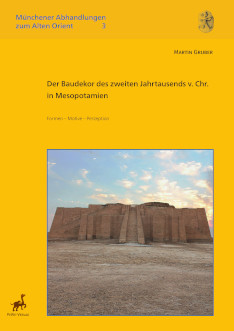MAAO-3 Martin Gruber
This study investigates the archaeological examples of architectural ornamentation in 2nd-millennium Mesopotamia. Diverse contemporaneous sources have been examined and analysed in the attempt to elucidate the differing aspects of this architectural form of expression. The emphasis is on sacred buildings as they provide the overwhelming majority of examples of those forms of architectural ornamentation that are treated here. Besides the monumentality of construction, the elaborate arrangements of buttresses and niches on the outer as well as on the courtyard façades of temples are among the most obvious architectural features that mark sacred space off from other urban buildings in the ancient Near East.
The ostentatious design of sacred buildings underlines the differences between ’temples’, ’dwelling-houses’ and ’palaces’, a differentiation which is far from obvious from the terms used for different types of buildings in ancient Mesopotamian languages. The sacred buildings were carefully looked after throughout centuries, thus forming an important architectural landmark within a changing urban environment – in contrast to more short-lived palaces and other profane buildings. In this way, sacred architecture becomes a meaningful and long-lasting reference point for the inhabitants’ orientation: the sacred architecture of Mesopotamia was more than a lifeless backdrop fort he activities of the population, providing an independent, dynamic structure which guided these activities.
MAAO-3 (Münchener Abhandlungen zum Alten Orient, Volume 3)
Martin Gruber
Der Baudekor des zweiten Jahrtausends v. Chr. in Mesopotamien. Formen — Motive — Perzeption.
2019, PeWe-Verlag, Gladbeck
384 pp., 339 figures
30 x 21 cm — hardcover
Price: € 65.00 [D]
ISBN: 978-3-935012-35-5


